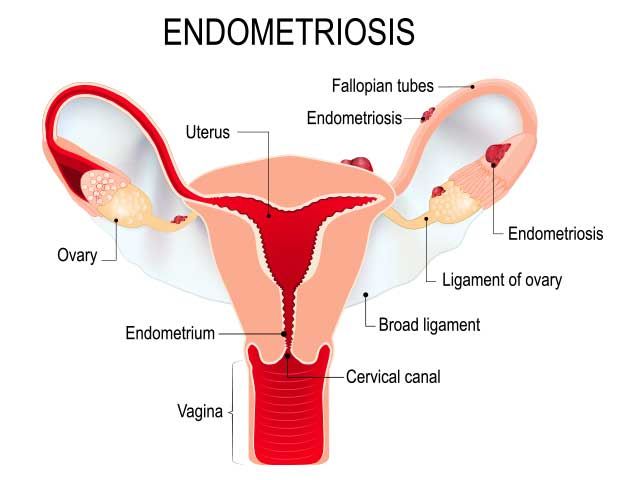Assessment of Endometriosis
(including Deep Infiltrating Endometriosis)
Find Us
Find your practice.
Endometriosis is a condition where endometrial tissue (lining of the uterine cavity) grows elsewhere in the pelvis. It is a common condition that occurs in the reproductive years and is a common and significant cause of pelvic pain (including painful periods and pain during sex), infertility and rarely symptoms related to bowel and bladder function.
The condition is characterised by growth of endometrial tissue with associated inflammation and fibrosis (scar tissue development).
The common locations include the ovaries, the pelvic peritoneum (smooth lining of the pelvis) – most commonly the space behind the uterus and cervix and the tissue between the vagina and rectum.
The ultrasound examination focuses on the detection of cysts in the commonly expected locations along with evidence of fibrosis (scar tissue formation) which is usually determined by assessment in real time of the mobility of all the pelvic organs. This examination involves a more detailed and focused assessment than would normally be performed as part of a routine pelvic ultrasound.
In particular clinical situations your doctor may wish to know about the likelihood of scar tissue formation within the pouch of Douglas (tissues behind the uterus and cervix) and rectovaginal septum (tissues between the vagina and rectum). This information is useful when some types of surgical procedures are planned for treatment of endometriosis. This form of endometriosis is sometimes known as Deep Infiltrating Endometriosis (DIE). The diagnosis involves extending the scope of the usual pelvic examination and requires a meticulous and systematic approach to the conduct of the ultrasound examination.
Preparation:
It requires no special preparation (i.e. the use of enemas or instillation of contrast into the vagina) other than what is normally required for a pelvic ultrasound.
Media

Endometriosis Discomfort Pain

Endometriosis illustration